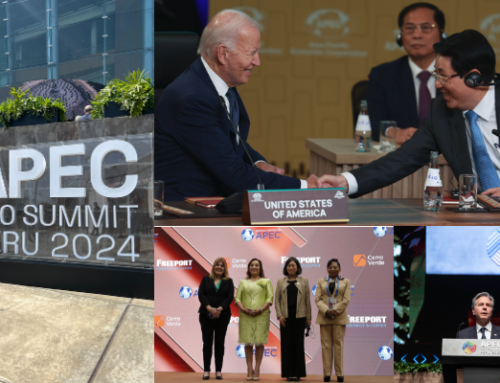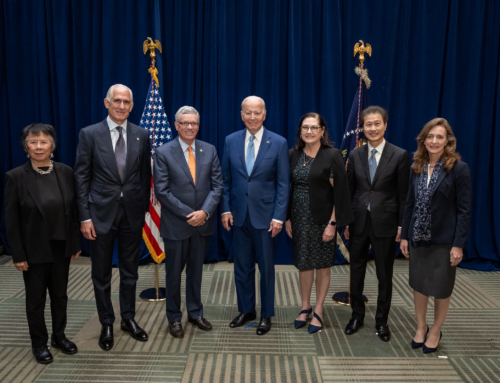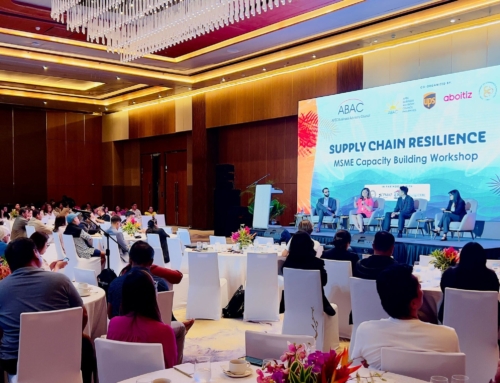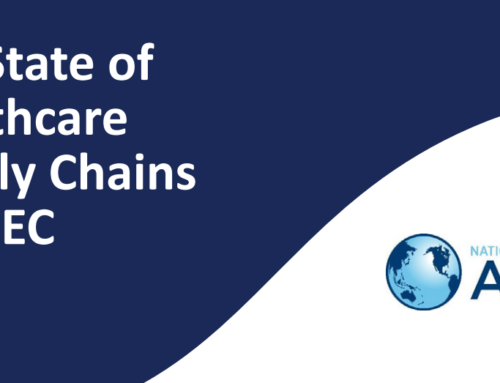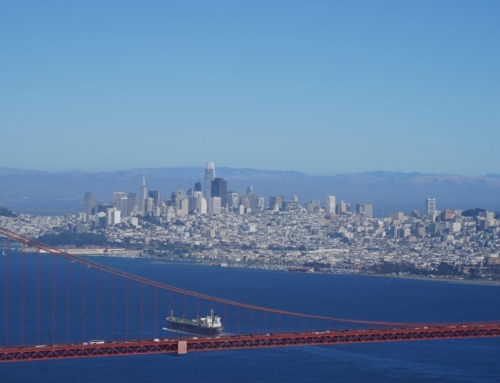
In commemoration of the 30th Anniversary, NCAPEC asked Board Chair Antony Cook, Corporate Vice President and Deputy General Counsel, Microsoft, three questions based on his observations of APEC and how emerging technologies and sustainability can shape the future.
1. The National Center for APEC counts Microsoft as one of its core founding members from our incorporation in 1994. From your perspective as the Board Chair, has APEC changed over the last 30 years? How?
APEC has indeed evolved significantly over the past 30 years, reflecting the changing priorities and challenges of the region. Its focus has shifted over the decades to address emerging global and regional issues. In the 1990s, the emphasis was on globalization and economic liberalization. The 2000s saw a heightened focus on human security and terrorism. The 2010s brought a drive towards environmental sustainability and inclusion. More recently, APEC has been addressing the impacts of the digital economy. APEC has adapted to the evolving economic landscape by promoting trade liberalization, economic integration, and sustainable development. The organization has also placed a stronger emphasis on digital transformation, innovation, and inclusive growth to ensure that all member economies benefit from economic progress. These changes reflect APEC’s commitment to staying relevant and responsive to the needs of its member economies, fostering a collaborative environment for addressing both traditional and emerging challenges.
2. Microsoft is at the forefront of innovation across the region. In your opinion, how is APEC useful as a platform for these groundbreaking innovations?
APEC serves as a vital platform for fostering innovation and collaboration across the region. It brings together 21 member economies, including some of the world’s most dynamic and technologically advanced nations. APEC provides a unique forum for member economies to collaborate on shared challenges and opportunities, encouraging the exchange of ideas, best practices, and technological advancements. This collaborative environment can lead to innovative solutions that benefit the entire region. Through APEC, member economies work towards harmonizing policies and regulations, which can reduce barriers to innovation. For instance, consistent data privacy and cybersecurity standards can facilitate the development and deployment of AI technologies across borders. APEC also focuses on capacity building, helping member economies develop the skills and infrastructure needed to support innovation. This includes training programs, workshops, and knowledge-sharing sessions that can enhance the region’s ability to leverage AI and other advanced technologies and encourages public-private partnerships, which are crucial for driving innovation. By bringing together government agencies, private sector companies, and academic institutions, APEC can help create a supportive ecosystem for AI research and development. Promoting free and open trade can provide innovators with access to larger markets, which is particularly important for AI startups and companies looking to scale their solutions across the region. APEC’s collaborative framework, policy harmonization efforts, capacity-building initiatives, public-private partnerships, market access facilitation, and focus on emerging technologies make it an invaluable platform for driving innovation, including AI, across the Asia-Pacific region. This collective approach not only accelerates technological progress but also ensures that the benefits of innovation are widely shared.
3. Environmental sustainability is now a core pillar of APEC. Can you tell us about Microsoft’s commitment to this topic and how the private sector can share its successes to help the APEC region reach climate goals?
Microsoft CEO Satya Nadella has called climate change “the defining issue of our generation.” Meeting this generational challenge requires putting sustainability at the center of our work, starting by addressing our own climate impact. We are committed to achieving our own ambitious sustainability goals, including: Carbon negative: By 2030, Microsoft aims to be carbon negative, meaning it will remove more carbon than it emits. By 2050, the company plans to remove all the carbon it has emitted since its founding in 1975. Delivering this commitment means focusing on three main areas: (1) reducing carbon emissions, (2) increasing use of carbon-free electricity, (3) carbon removal; Water positive: By 2030, Microsoft aims to replenish more water than it consumes across its direct operations; Zero waste: By 2030, Microsoft plans to achieve zero waste across its direct waste footprint, and protect and preserve ecosystems: Microsoft has committed to protecting more land than it uses by 2025 and is building a Planetary Computer to help monitor and manage the Earth’s ecosystems. However, we recognize that the world is not on track to meet critical climate goals, and we see many of the world’s challenges reflected in our own situation. We are on track in several areas, but not every area. Amid the challenges, we remain optimistic that a Net Zero future is possible. Progress is happening every day across our campuses and datacenters and throughout our value chain. Microsoft is also investing in renewable energy, promoting sustainability in its supply chain, and reducing the carbon footprint of its products. The company is transparent about its progress and challenges, sharing detailed reports and updates regularly.
The private sector plays a crucial role in advancing sustainability in the APEC region. In Asia, our primary focus is on carbon, given the significant supply chain footprint that Microsoft has across the region. Scope 3 emissions, the indirect emissions that occur as a result of Microsoft’s activities but are outside of our direct control, have represented 96% of our unaddressed emissions over the last three years. The majority of these emissions are in the APAC region. These emissions are also increasing, having risen by around 30% since 2020. The increase is primarily being driven by the construction of new datacenters and the associated embodied carbon in datacenter building materials, as well as hardware components such as semiconductors, servers, and racks. Therefore, we are engaging closely on the challenges that the world must overcome to develop and use greener concrete, steel, fuels, and chips.
We have launched a company-wide initiative to identify and develop the added measures we’ll need to reduce our Scope 3 emissions. Leaders in every area of the company have stepped up to sponsor and drive this work. This led to the development of more than 80 discrete and significant measures that will help us reduce these emissions – including a new requirement for select scale, high-volume suppliers to use 100% carbon-free electricity for Microsoft delivered goods and services by 2030. As a whole, this work builds on our multi-prong strategy, this year focusing on: a) Improving measurement by harnessing the power of digital technology to garner better insight and action, b) Increasing efficiency by applying datacenter innovations that improve efficiency as quickly as possible, c) forging partnerships to accelerate technology breakthroughs through our investments and AI capabilities, including for greener chips, steel, concrete, and fuels, d) building markets by using our purchasing power to accelerate market demand for carbon-free energy and pioneering carbon removals technologies and d) advocating for public policy changes that will accelerate climate advances.
By sharing these successes and collaborating on innovative solutions, the private sector can help the APEC region achieve its climate goals and promote a more sustainable future.

